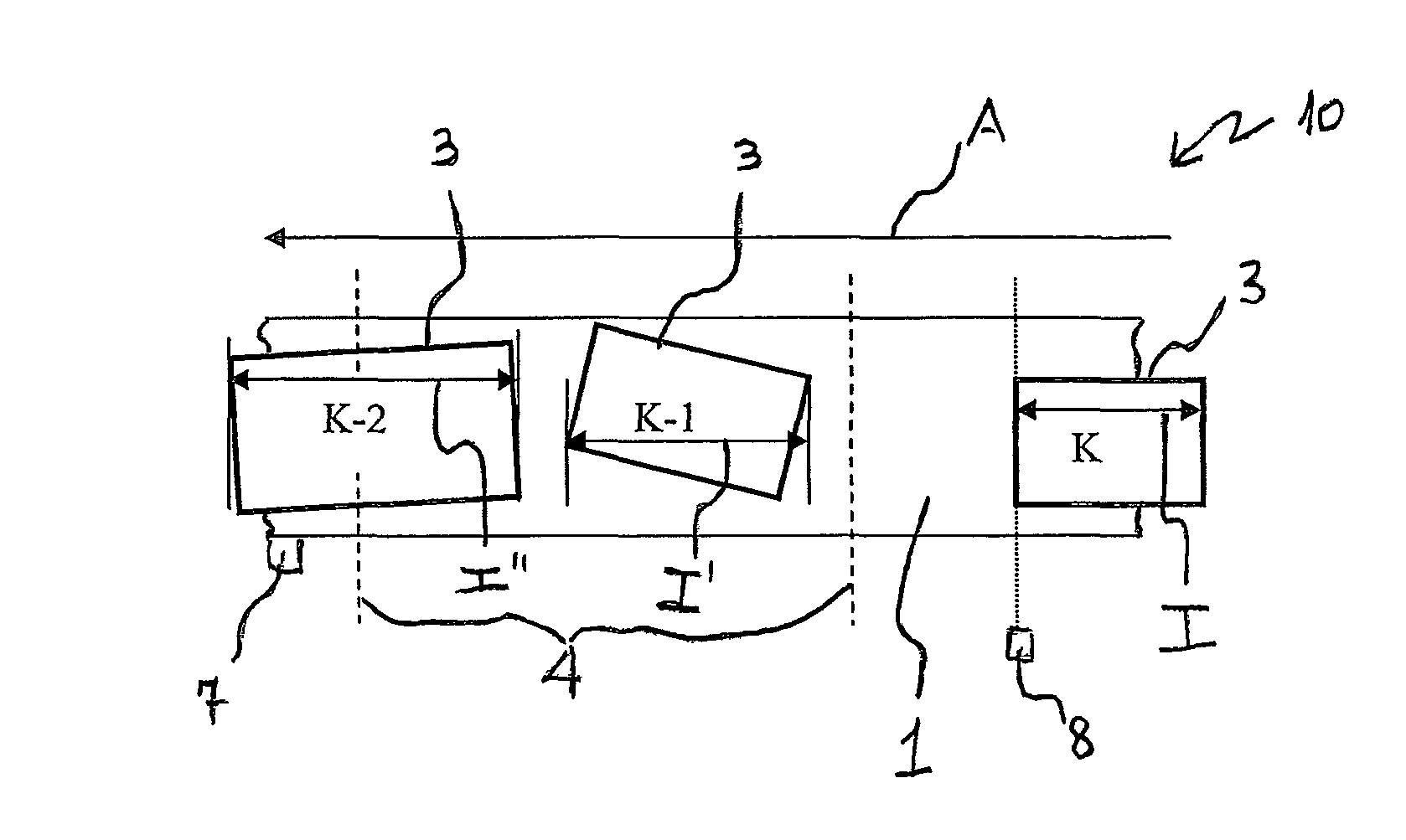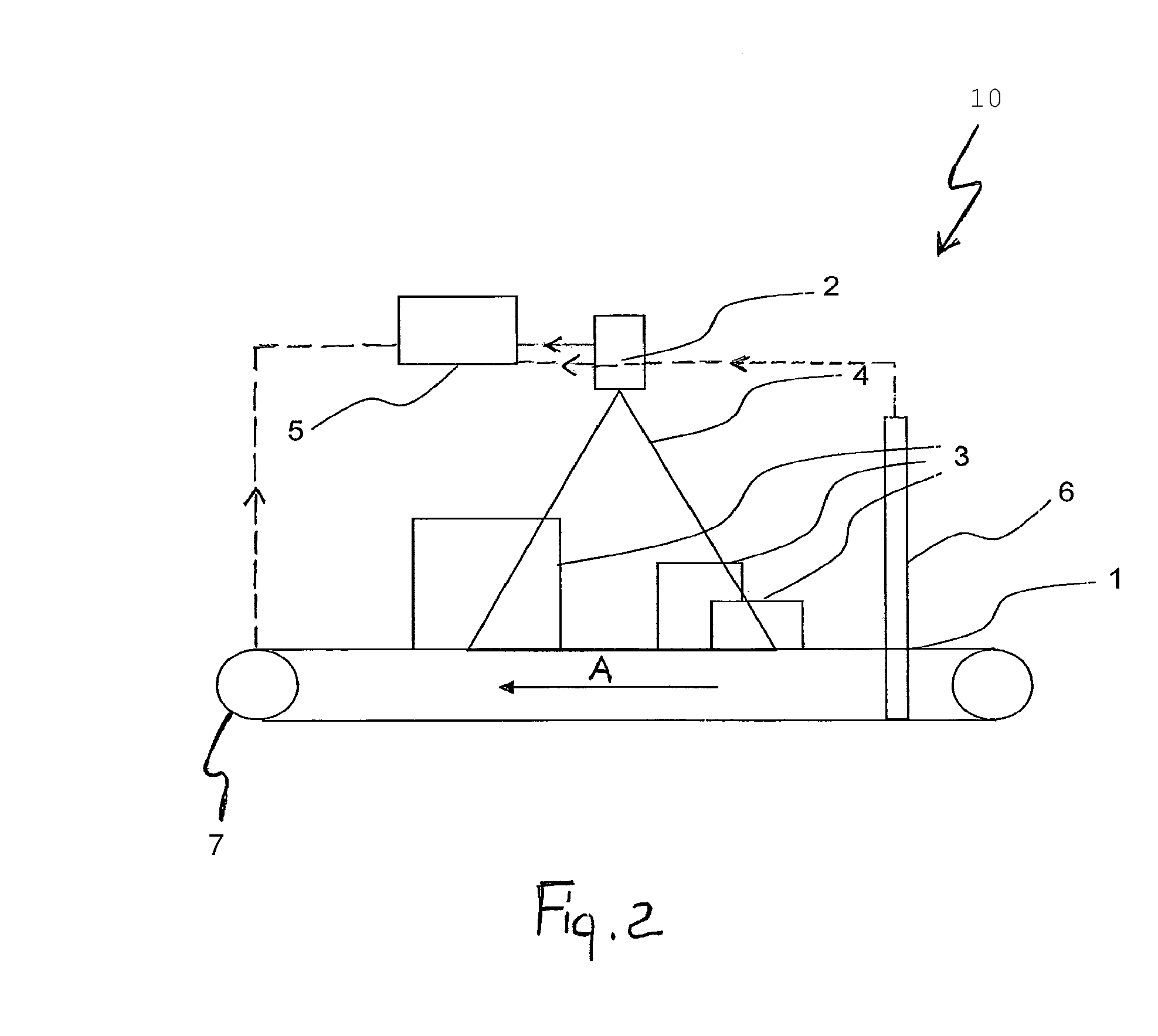Method for the optical identification of objects in motion
- Summary
- Abstract
- Description
- Claims
- Application Information
AI Technical Summary
Benefits of technology
Problems solved by technology
Method used
Image
Examples
Embodiment Construction
[0127]In FIG. 3, reference numeral 10 indicates an object identification system that carries out a first preferred embodiment of the method of the present invention.
[0128]System 10 comprises a conveyor belt 1 which moves a plurality of objects 3 along an advancing direction A with respect to a digital camera 2, each object being provided with an optical code (not visible) on the top face thereof, such an optical code having a predetermined optical resolution.
[0129]The camera 2 is arranged in a predetermined position with respect to the conveyor belt 1. In particular, it is arranged above the conveyor belt 1 and frames a detection area 4 shaped as a pyramid through which objects 3 travel.
[0130]Preferably, as shown, the camera 2 is arranged with its optical axis perpendicular to conveyor belt 1 and acquires images when objects 3 travel at said optical axis.
[0131]As shown, at least some of objects 3 are at least partly arranged side by side with reference to said advancing direction A....
PUM
 Login to View More
Login to View More Abstract
Description
Claims
Application Information
 Login to View More
Login to View More - R&D
- Intellectual Property
- Life Sciences
- Materials
- Tech Scout
- Unparalleled Data Quality
- Higher Quality Content
- 60% Fewer Hallucinations
Browse by: Latest US Patents, China's latest patents, Technical Efficacy Thesaurus, Application Domain, Technology Topic, Popular Technical Reports.
© 2025 PatSnap. All rights reserved.Legal|Privacy policy|Modern Slavery Act Transparency Statement|Sitemap|About US| Contact US: help@patsnap.com



